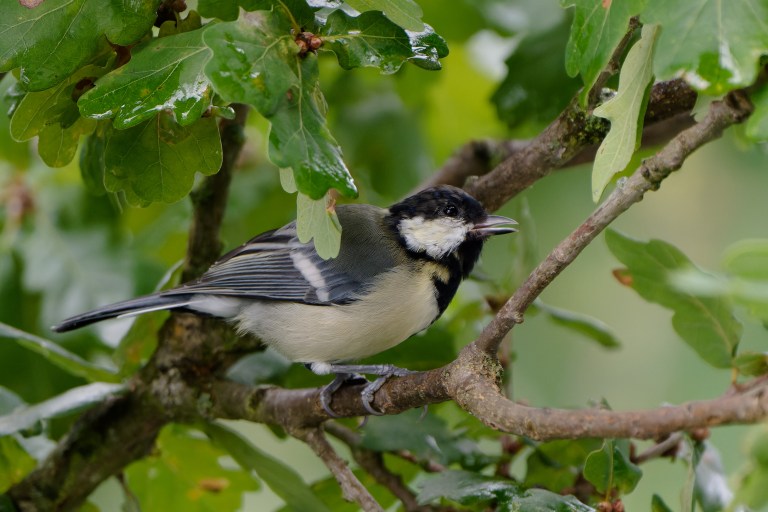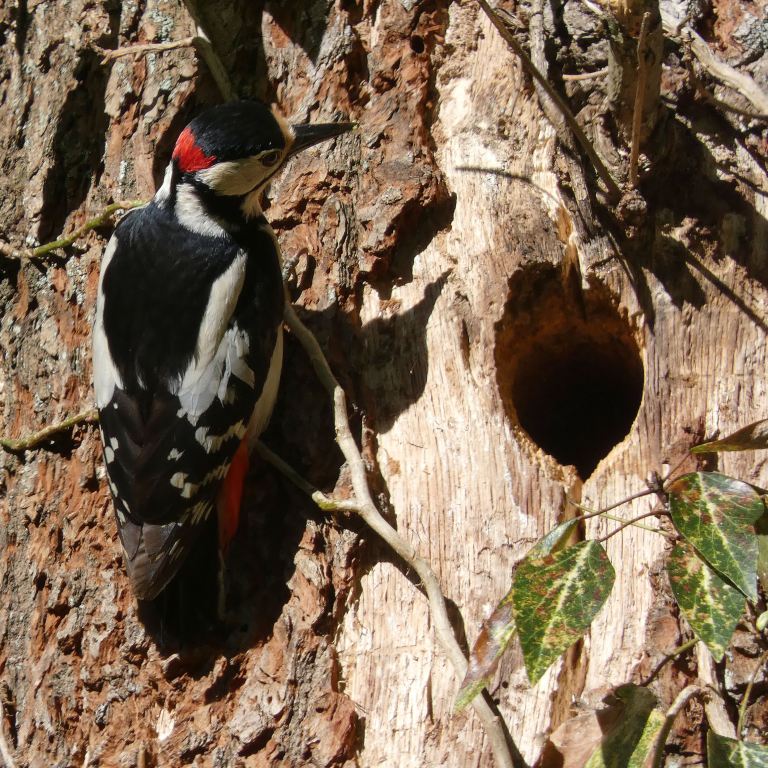Once again we’re running dangerously low on photos, and I ask contributors to step up and send me some. Thanks!
Today’s batch comes from reader Uwe Mueller, and were taken in Bergisches Land, the part of Germany where he lives. Uwe’s captions and notes are enclosed, and you can enlarge the photos by clicking on them.
Common wood pigeon (Columba palumbus), These are living near my place and I shot this one from my balcony last year (shot only with the camera, of course). Interestingly we also have a big colony of feral pigeons living here but both species never mix. The feral pigeons stay on the streets between the houses, the wood pigeons are living in the trees in the nearby forest:
Eurasian blue tit (Cyanistes caeruleus). Shot at the same day as the wood pigeon. These are common visitors at my balcony where I feed them:
Great tit (Parus major). Another visitor at my balcony who is also nesting here:
Song thrush (Turdus philomelos). As their name suggests these are great singers. Currently it is their time and I can hear them everywhere:
Eurasian wren (Troglodytes troglodytes). A little bird that is quite difficult to spot. It loves thick bushes and avoids open spaces. To get it in open sunlight as in this image is a rare opportunity:
This Great spotted woodpecker (Dendrocopos major) is feeding its chickens. The male woodpecker is recognizable through its red neck which the female doesn’t have. Another visitor at our balcony but they are extremely cautious. The smallest hint of a movement behind the glass of our windows and they immediately take off:
A young Great spotted woodpecker. Their top of the head is completely red during young age:
A European robin (Erithacus rubecula) singing as loud as it can:









Lovely photos.
The Common wood pigeon has such a graceful shape.
The European robin you caught at the perfect moment.
Thanks!
Thank you. It is amazing to me how much this selection of birds from Germany looks both in size and coloring like those we see regularly in our backyard in Virginia on the East coast of the U.S…to my untrained eye of course!
I find it kind of uncanny, like visiting an alternative universe.
+1 (I used to live in southwestern Virginia.) And we have west coast look-a-likes here as well. Beautiful products of allopatric speciation.
That is a good observation. Esp the wood pigeon and woodpecker, we have a couple species with very similar markings. And I’m on the west coast!
There are several bird photographers from the U.S. on Youtube with whome’s photos I made the same – and kind of reversed – observation. One took a picture of a Brown creeper (Certhia americana) and I immediately went like “Hey, that’s our Eurasian treecreeper!” (latin name: Certhia familiaris). The same coloration, the same downwardly bent bill and also the same way of running up and down a tree. A bird btw that I hope to include in one of the next photo batches.
The similarities between some American and Eurasian species are really striking.
Some great shots. It’s a pleasure to see birds I recognise here in the streets and parks of London.
The color composition / bokeh of the blue tit photo is sublime – producing a wonderful mood.
Beautiful photos – thanks!
Thank you so much for these photos. They bring back many memories of birding when I lived in Göttingen for a year and a half some decades ago. I still remember most of their German names. One I especially love is Zaunkönig (wren)–literally, king of the fence. Lest readers in the U.S. basically equate the size of the wood pigeon with our common pigeons, the wood pigeons are about a quarter larger–they seem huge in comparison and, of course, their coos reverberate even further.
“The Wren, the wren, the King of all birds” said to be the King of all birds of Ireland.
Wonderful picture of this tiny not often seen bird.
Thank you for all these pictures, made my day.
I am very interested in the red headed juvenile great spotted woodpecker. While ornamentation of juveniles is not unheard of in birds, it is not common. I’m doubting that they are ornamented as nestlings since woodpecker chicks are generally altricial. Anyone have any ideas about this?
I live in south central PA adjacent to a small wooded area and have five species of woodpeckers that frequent my bird feeders, especially the suet. For almost 30 years I’ve observed them and have noticed that both the downy and hairy juveniles have bright red patches on top of their heads just after they have fledged (so presumably the patches are there when they hatch). Over the course of the next several weeks the patches gradually become less intense, then disappear altogether, at which point the males begin to develop the characteristic red patch on the backs of their heads. Most people never get to see these changes, but the parents of the young feed them suet or seed, so the young learn to come to the feeders, where I can observe them. For anyone concerned that the young do not learn to feed on natural sources, I see both the adults and the young fly directly to the trees and peck at the bark, where they presumably find insects and whatever else they eat.
Sharp photography of some really charismatic birds. That juvenile woodpecker is a cutie. I wonder if the red top catches the attention of its parents (half responding to Patricia above). Thanks for sharing these wonderful shots.
Very beautiful, as others have said – danke schoen! 😊
Many thanks to all for the kind words.